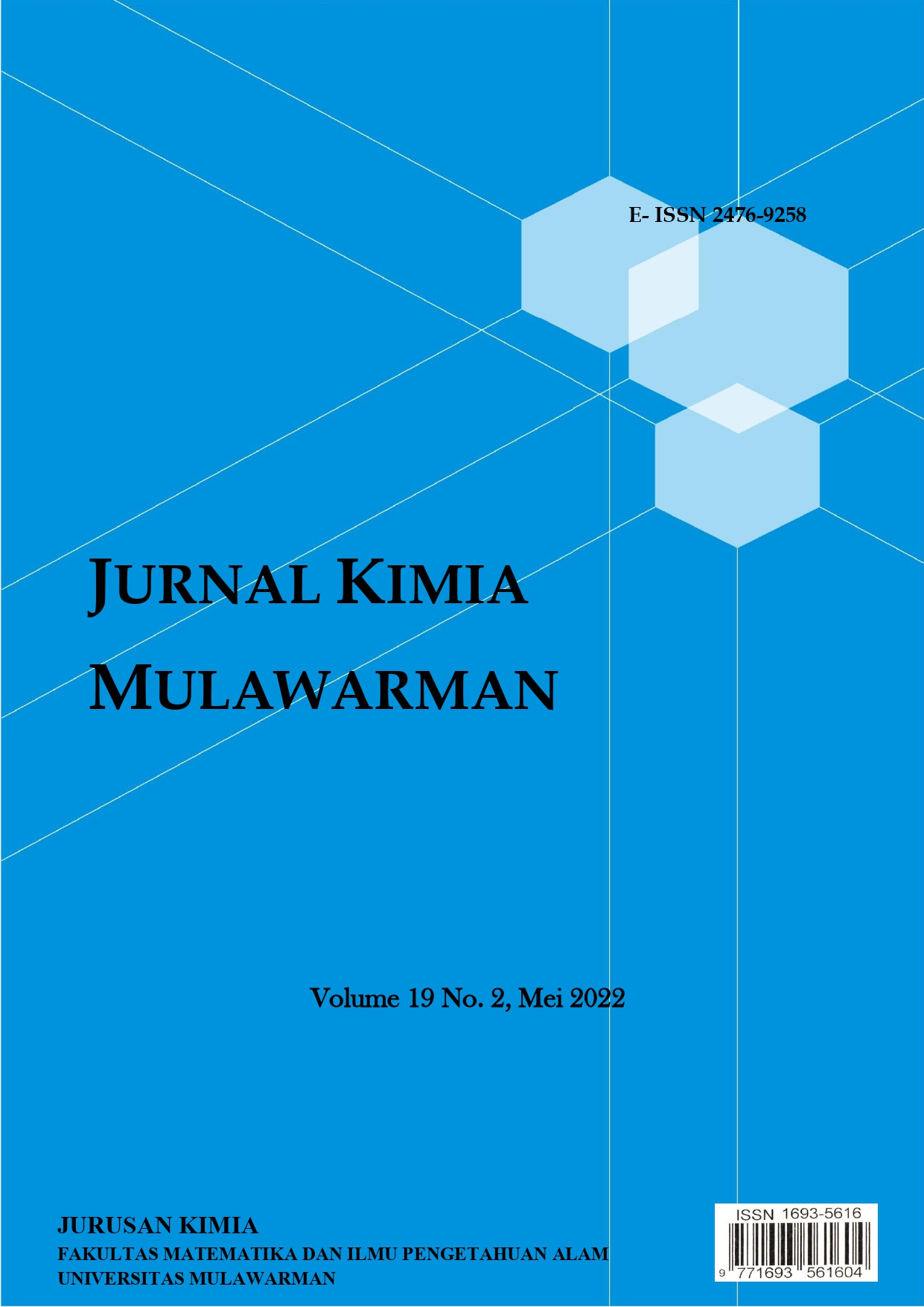Sintesis Silika Gel dari Abu Sekam Padi Termodifikasi Kitosan serta Aplikasinya sebagai Adsorben Methylene blue
DOI:
https://doi.org/10.30872/jkm.v19i2.933Abstract
ABSTRACT
Synthesis of silica gel from chitosan-modified rice husk ash and its application as an adsorbent of methylene blue have been studied. The stages of this research included the preparation of rice husk samples, the synthesis of silica ash of rice husks, sodium silicate, chitosan solution, and synthesis of silica gel - chitosan - tripolyphosphate, and the characterization of silica gel material from chitosan-modified rice husk ash. The results showed that silica gel adsoerben from chitosan modified rice husk ash was able to adsorb methylene blue dyes with an optimum pH of 5, optimum contact time for 60 minutes and adsorption capacity of 16.4554 mg/g.
Keywords: rice husk, silica gel, chitosan, methylene blue.
Downloads
References
[2] Chen, J. M. dan Chang F. W., 1991, The Chlorination Kinetics of Rice Husk, Ind. Eng. Chem. Res. 30, 2241-2247
[3] Mahvi, A.H, A. Maleki dan A. Eslami, 2004, Potential of Rice husk and Rice husk Ash for Phenol Removal in Aqueous System. “American Journal of Applied Sciences” 1(4), 321-3226.
[4] Fahmiati, Nuryono, dan Narsito. 2006. Termodinamika Adsorpsi Cd(II), Ni(II), dan Mg(II) pada Silika Gel Termodifikasi 3-Merkapto-1,2,4-Triazol. Indonesian Journal of Chemistry. 6(1): 52-55.
[5] Rabea, E. E., Badawy, M .E .T., Stevens, C. V., Smagghe, G., and Steurbout, W., 2003. Chitosan as Antimicrobial Agent: Aplication and Mode of Action, Biomacromolecules, 4, 1457-1465.
[6] Cahyaningrum, S.E., Amaria, Agustini R., Santosa, S.J., dan Narsito. 2007. Adsorpsi Seng(II) menggunakan Biomassa Saccharomyces Cerevisial yang Diimobilisasi pada Silika secara Sol Gel, Akta Kimindo, Yol.2 No. 2 April 2007 : 63-74.
Downloads
Published
Issue
Section
License
Authors retain copyright and grant the journal right of first publication with the work simultaneously licensed under a Creative Commons Attribution License that allows others to share the work with an acknowledgement of the work's authorship and initial publication in this journal.
Authors are able to enter into separate, additional contractual arrangements for the non-exclusive distribution of the journal's published version of the work (e.g., post it to an institutional repository or publish it in a book), with an acknowledgement of its initial publication in this journal.
This license requires that reusers give credit to the creator. It allows reusers to distribute, remix, adapt, and build upon the material in any medium or format, even for commercial purposes. If others remix, adapt, or build upon the material, they must license the modified material under identical terms.



